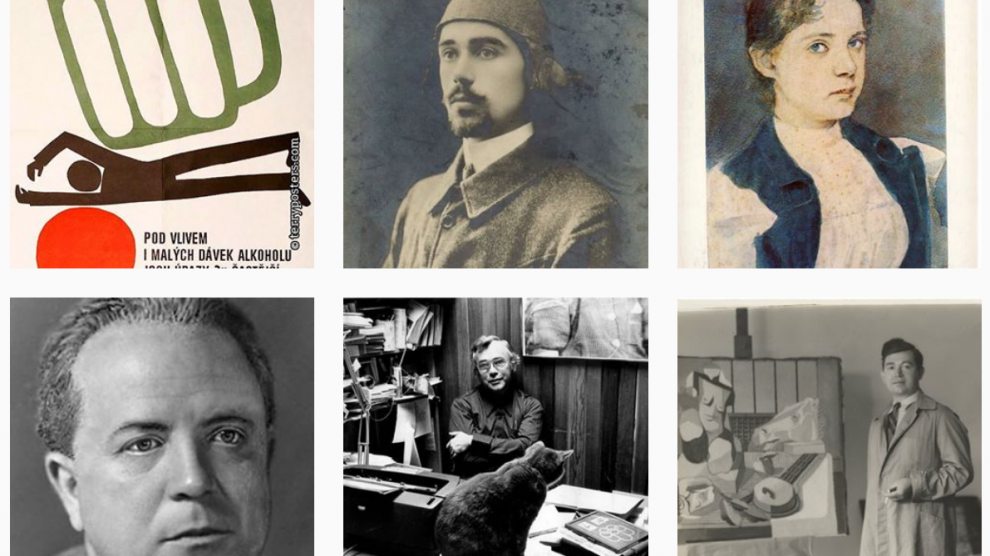This year, travelling around the countries of emerging Europe is more difficult than usual, and same places impossible, due to the restrictions put in place to halt the Covid-19 pandemic. Luckily, thanks to the magic of social media, you can still see an amazing range of eye-catching regional wonders and learn about the history and culture of the region without leaving your home.
From key historical Slavs to female artists in Armenia and great design coming out of the former Yugoslavia, here are five Instagram accounts that are definitely worth a follow.
They are for anyone who wishes to immerse themselves in the culture, history, and everyday life of the region. Follow these for a while, and you’ll get a much better picture of what emerging Europe is all about.
—
Historical titbits courtesy of Slavic Misery
Central and Eastern Europe is home to many interesting and famous people. Through the posts on this account you’ll learn fun facts delivered in a slightly irreverent way.
Poets, writers, inventors, and political figures feature in the posts, along with selected information from their biographies that brings history to life but also provides a lot of social context.
A great place for those looking to absorb fun pieces of history every day. Slavic Misery, however, it’s not just an Instagram account. There is also a book that continues in the same vein, helping those interested in history to learn more about the Slavic nations in emerging Europe.
More books are available on the Poshlost Books website including the recently published Via the Left Bank of the 90s that takes readers on a journey though the history of Prague using the city’s underground metro network as a guide.
—
Chrysalis Magazine, the design mag that’s amplifying the voices of young Belarusian artists
Usually, Chrysalis Magazine is a platform that spotlights young and emerging artists from all around Belarus. But since the protests against long-time president and strongman Alexander Lukashenko and his rigged elections began, the account has been essentially turned over to artists who are raising their voices against violence and repression.
Follow it for art both striking and humorous, as the featured artists try to raise awareness about what is happening in their home country and share their hopes for the future.
The platform also gives the artists space to voice their own concerns in the own words about what is going on as they offer more context behind their work.
—
Get immersed in the ordinary and the extraordinary of Eastern European life with Everyday Eastern Europe
This Instagram account brings photographers from around emerging Europe together and showcases some of the best photos of the region you’ll ever see.
Funny, touching, serious, playful, and everything in between, it focuses on the lives of everyday people. Be sure to read the descriptions to learn more about the subjects.
If you’ve had your fill of all the sightseeing and touristy pictures and castles and churches no longer excite you all that much, you’ll enjoy the anthropological approach this collection of photos takes.
From eastern Orthodox weddings to the beaches of Bulgaria, Everyday Eastern Europe reveals the rich and dynamic life in the region.
—
Learn about women artists in Armenia
The history of art produced by women in Armenia is long and diverse, and you can learn all about it if you follow Armenian Women Artists on Instagram.
According to the mission statement, this profile seeks to bring awareness and recognition to the women artists of Armenia, both in the country and in diaspora communities.
It does so by featuring art pieces, but also photographs of the artists themselves along with thought-provoking historical and social context. With that approach, once you follow the account long enough, you’ll get a nuanced and complex understanding of what it means to a woman and an artist in or from Armenia.
—
Celebrate Yugoslavian industrial design with Made in Yugoslavia
Much has been said and written about Yugoslavian architecture and monuments, but objects intended for everyday use can also tell stories you might want to hear.
Billing itself as “a finely curated collection of vintage treasures from former Yugoslavia,” Made in Yugoslavia features stunning photography of everyday objects ranging from stools and armchairs to rotary phones and typewriters.
All made in what is now known as the Adria region, but which used to be part of Yugoslavia. For those who grew up there, the profile will be a trip down memory lane filled with familiar objects that used to make up the fabric of everyday life.
And for those who are interested in or love the region, it’s a look at how things used to be. Regardless, it’s almost like a virtual industrial design museum, showcasing how tastes evolved in a country and in a society that no longer exists.
What’s better, you can actually become the owner of these objects, as there is a related Etsy shop where many of the items can be purchased.
—
Unlike many news and information platforms, Emerging Europe is free to read, and always will be. There is no paywall here. We are independent, not affiliated with nor representing any political party or business organisation. We want the very best for emerging Europe, nothing more, nothing less. Your support will help us continue to spread the word about this amazing region.
You can contribute here. Thank you.






Add Comment